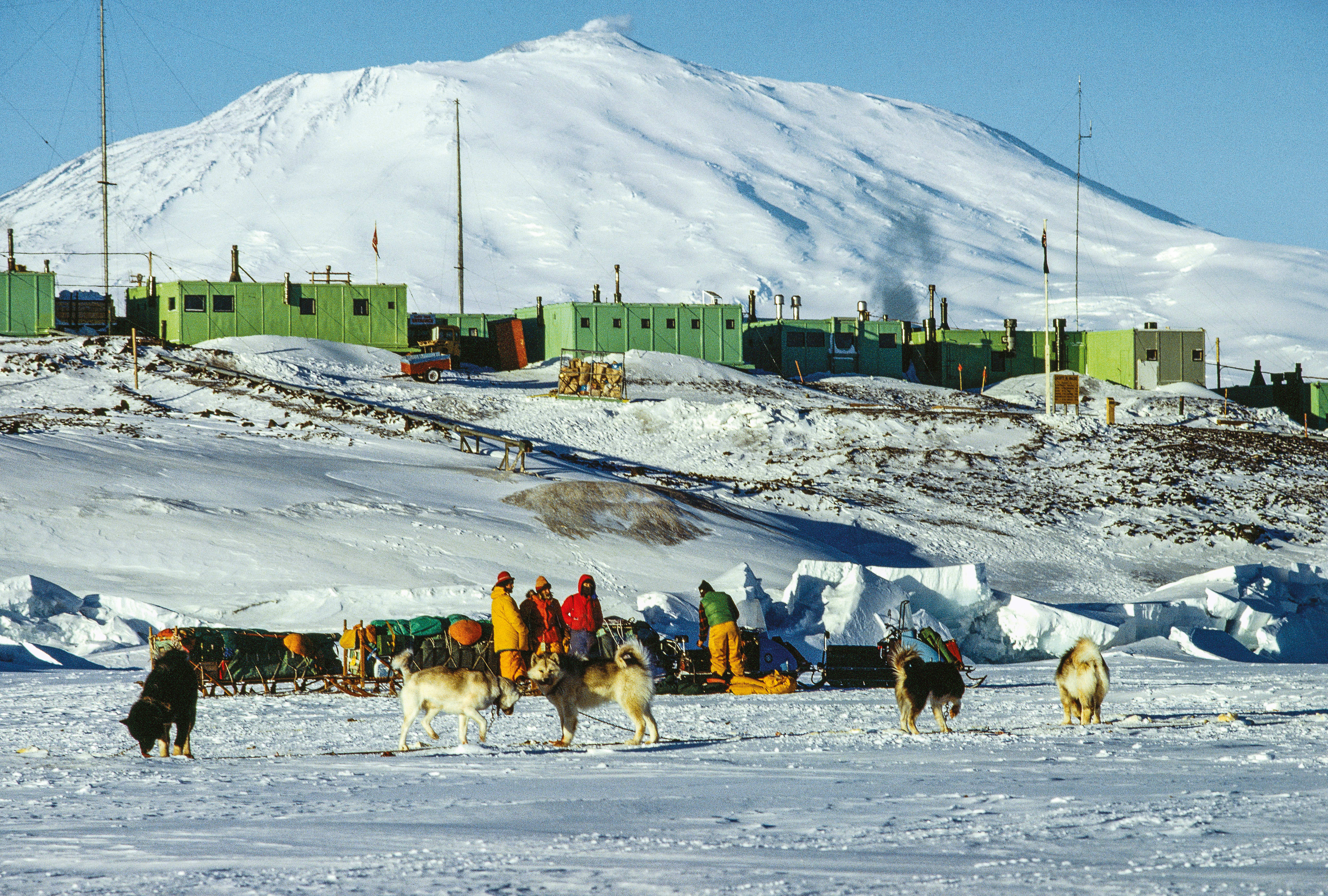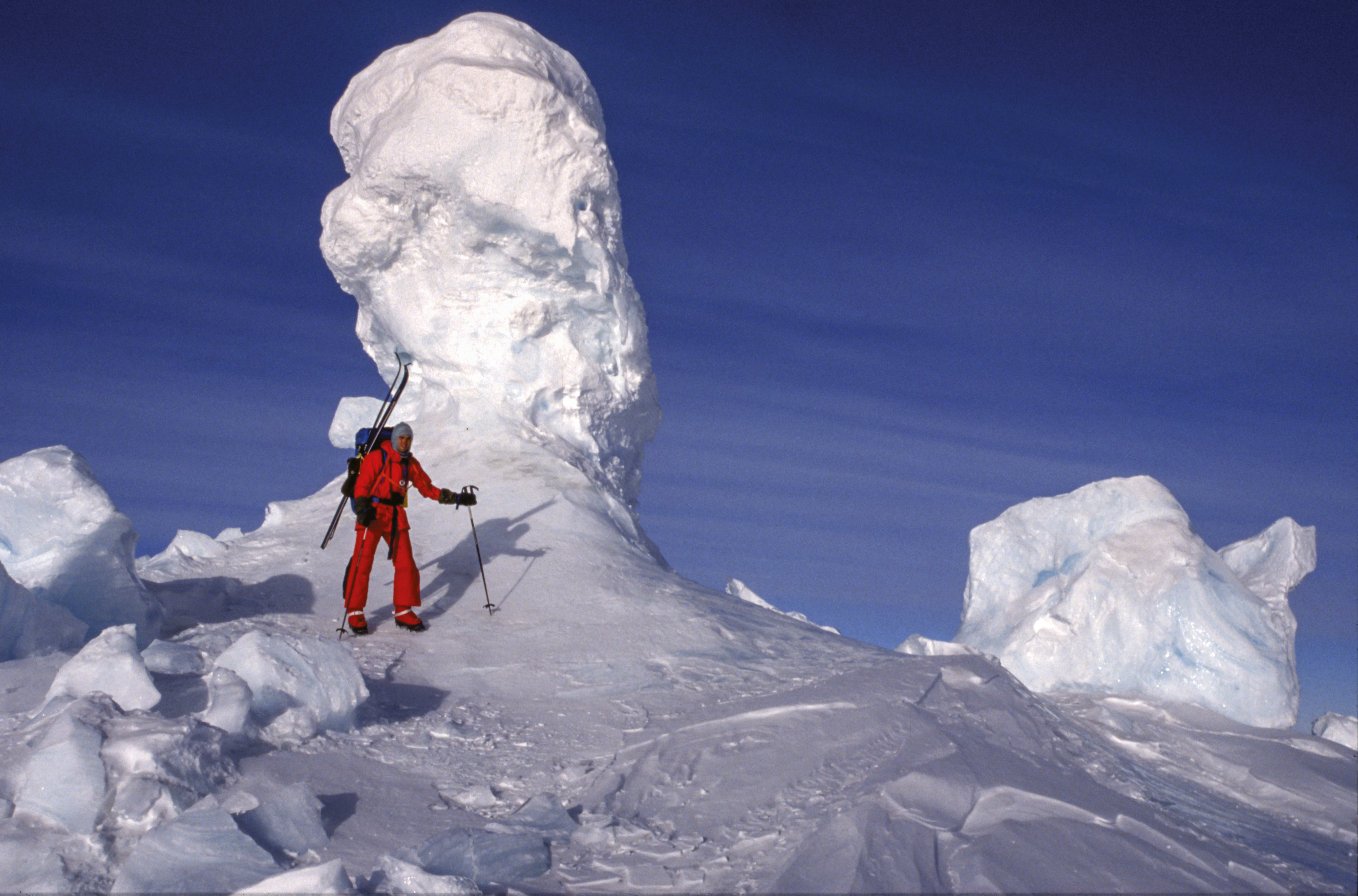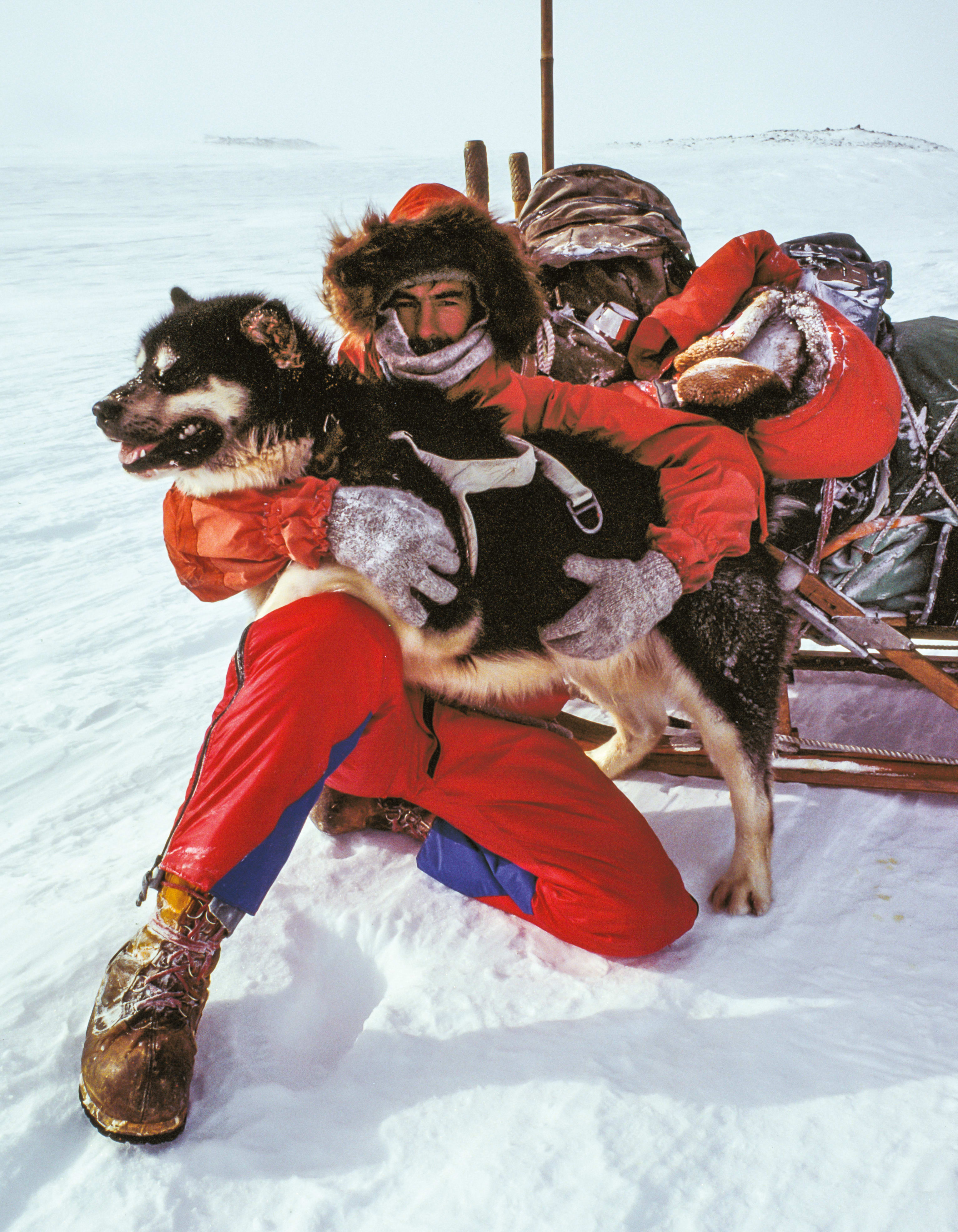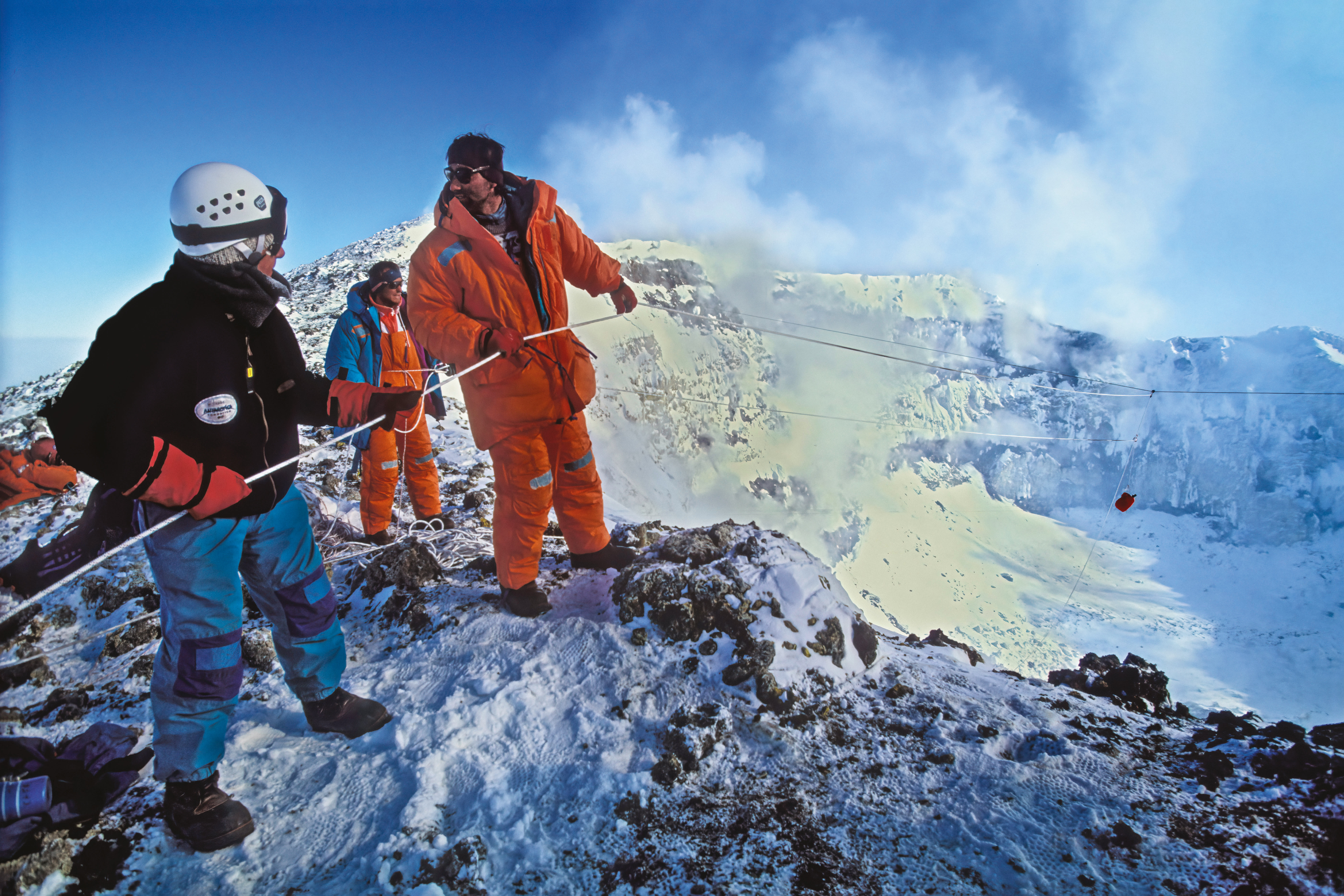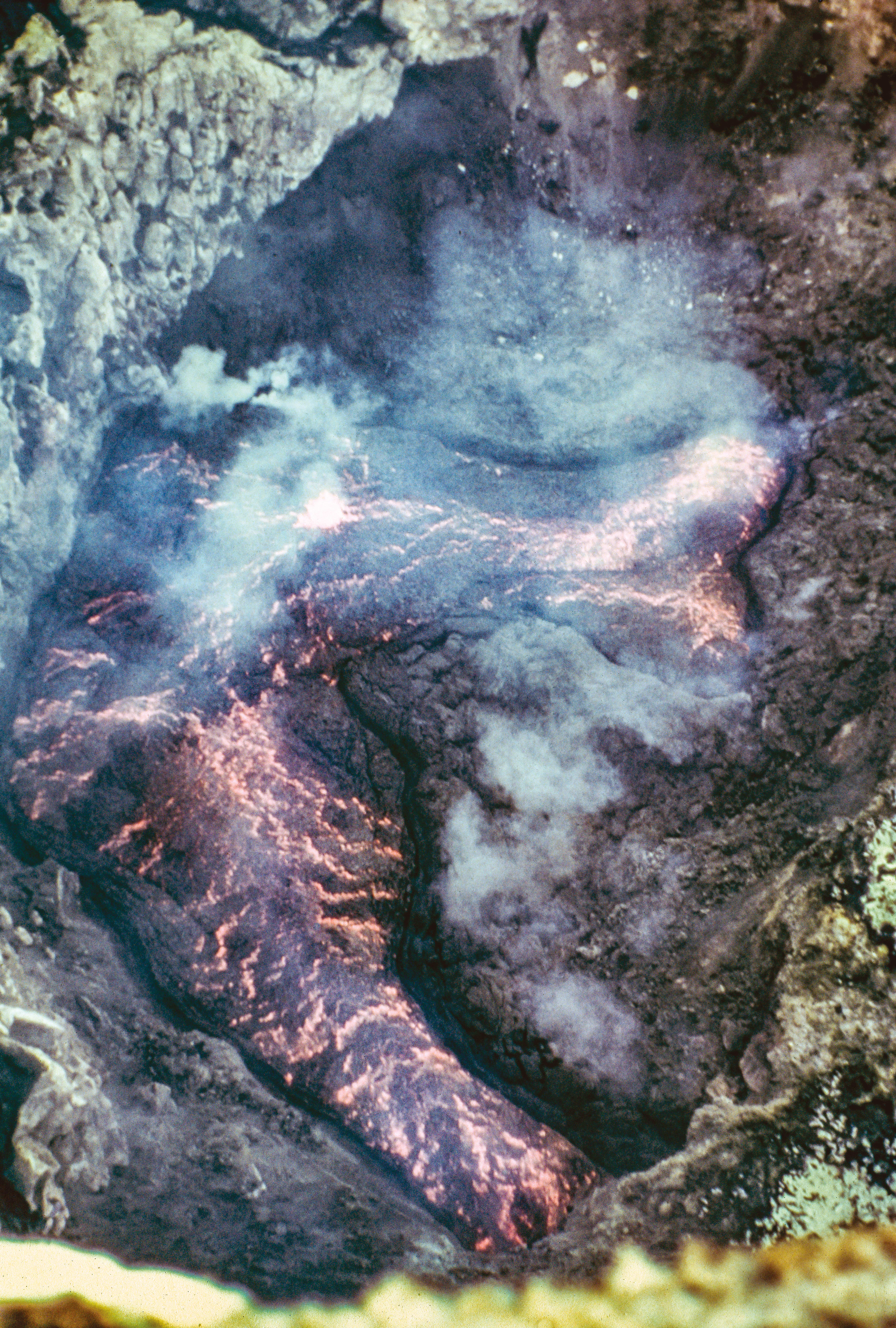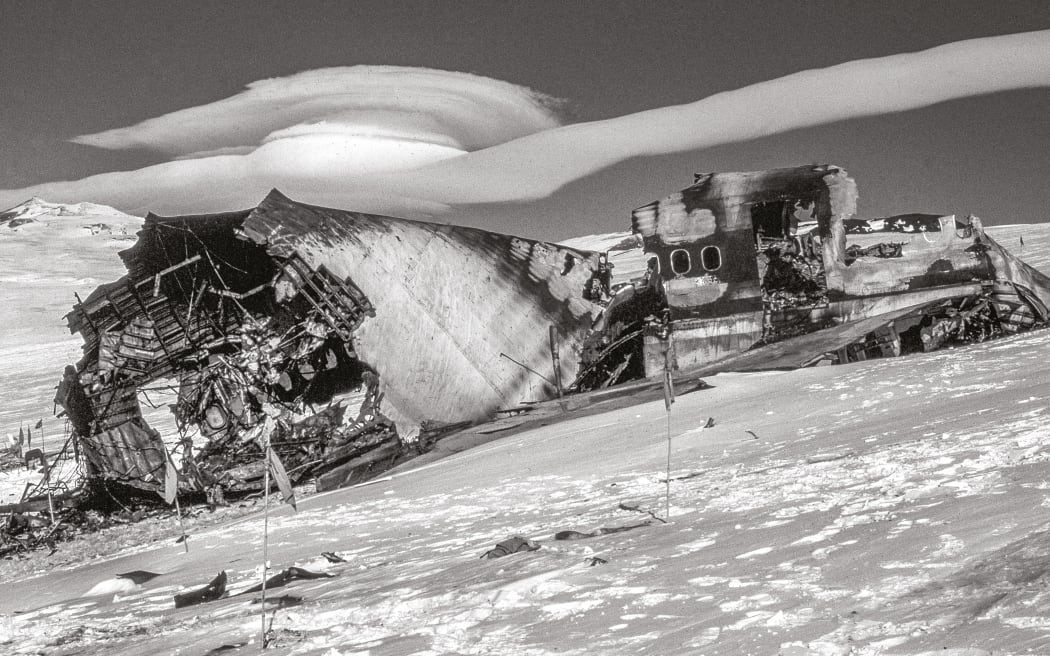
The remains of the largest section of the DC-10 aircraft, seen here from the recovery team's campsite. A strong windcloud has formed over the summit of Mount Terror. Photo: Colin Monteath
Dealing with the trauma of taking part in the recovery operation of the Erebus disaster was difficult, as there was no darkness to soothe the eyes and the mind.
Polar and mountain photographer Colin Monteath, who has worked in Antarctica for 32 seasons, explains this in his new book Erebus The Ice Dragon; A portrait of an Antarctic volcano.
Speaking to Kim Hill on Saturday Morning, Monteath said the lack of darkness was a "constant problem" during summer operations in Antarctica.
"It is hard to get rest, it's hard to pace yourself, hard to know when to sleep, some people sleep during the so-called night ... It's a complicated equation but it can be very draining. You end up working very long hours."
Monteath said he and others that took part in the recovery operation had to pace themselves on the crash site.
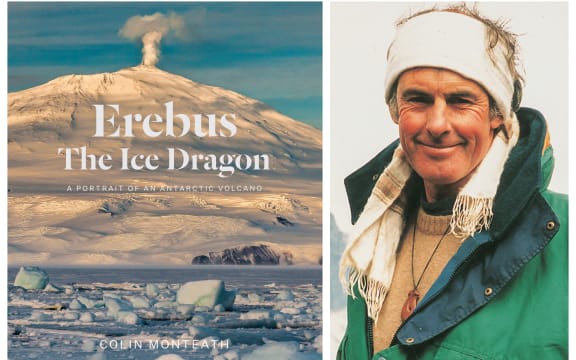
Photo: supplied
In 1979, 257 people were killed when an Air New Zealand flight crashed on the mountain during a sightseeing journey to Antarctica.
Everyone on board the aircraft died.
Monteath said it was important to add a chapter about the disaster in the book and said: "I hope the chapter means a lot to New Zealanders who were involved."
Mount Erebus is an ultra mountain - named for its prominence above the surrounding landscape - and the planet's southernmost volcano. It is sheathed in ice, with hundreds of ice caves and a lava lake.
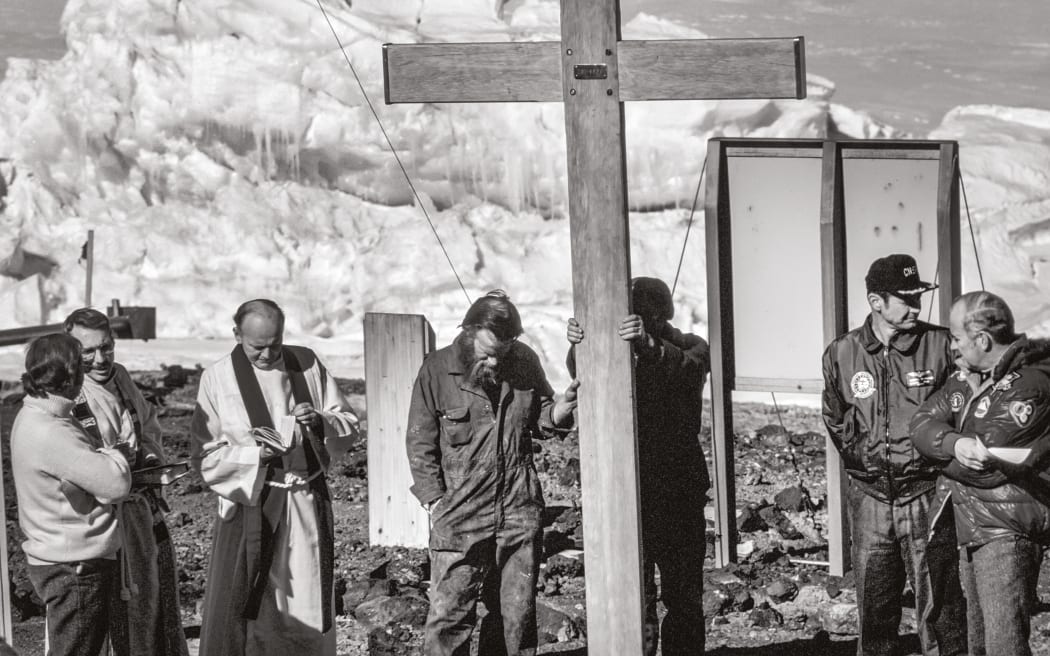
The dedication service of the crash memorial cross took place in front of Scott Base shortly after everyone had evacuated the crash site. From left: Mike Prebble, leader of Scott Base, talks to two US Navy chaplains; Garth Varcoe and Ted Robinson hold the cross; US Navy Commander Darryl Westbrook; and Bob Thomson, superintendent of DSIR Antarctic Division. Photo: Colin Monteath
The mountain is "quite exciting" because of its persistent lava lake, Monteath said, making it unique and worth studying from a scientific point of view.
It was first sighted by James Clark Ross in 1841 who sailed two ships from England across the Indian Ocean to Hobart, he said.
From there, Ross broke through to what is now known as the Ross Sea.
He was "gobsmacked" to find transantarctic mountains - one being Erebus - which was named after one of the two ships.
Science had gone on at the mountain since the early 1900s - starting with "basic science" to "sophisticated" science nowadays.
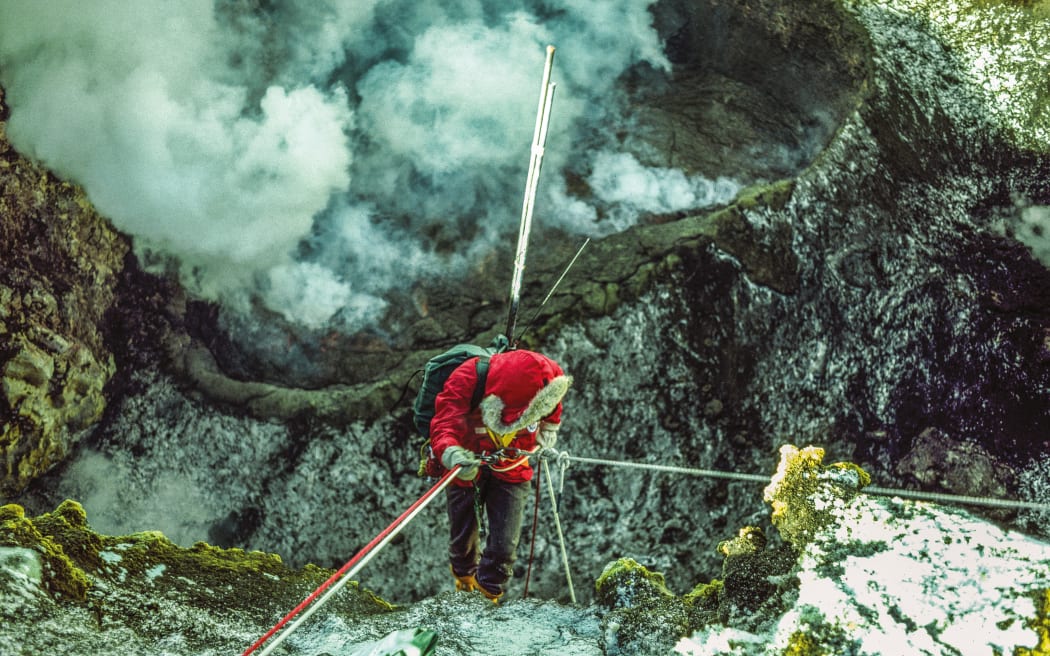
Werner Giggenbach abseils over the lip of the Inner Crater to commence an 80-metre drop towards the lava lake and fumaroles to take gas samples. Titanium rods stick out from his pack, used to get a sampling flask close to hot escaping gas. Photo: Colin Monteath
Monteath took part in a descent into the inner crater in 1978 when DSIR scientist Werner Giggenbach wanted to get as close to the lava lake as possible to sample gases.
It was considered dangerous, but Monteath said "science has always taken risks" - especially in Antarctica.
At the time of the descent, the volcano - which was very active - had not blown for about 15 hours so risk was considered low.
But Monteath said active vents began glowing red and within seconds, the volcano blew.
Giggenbach managed to brush off some lava from his knee that blew out before it burned through to his skin.
Monteath said his book, published by Massey University Press, is the first Antarctic book to focus on a single mountain.
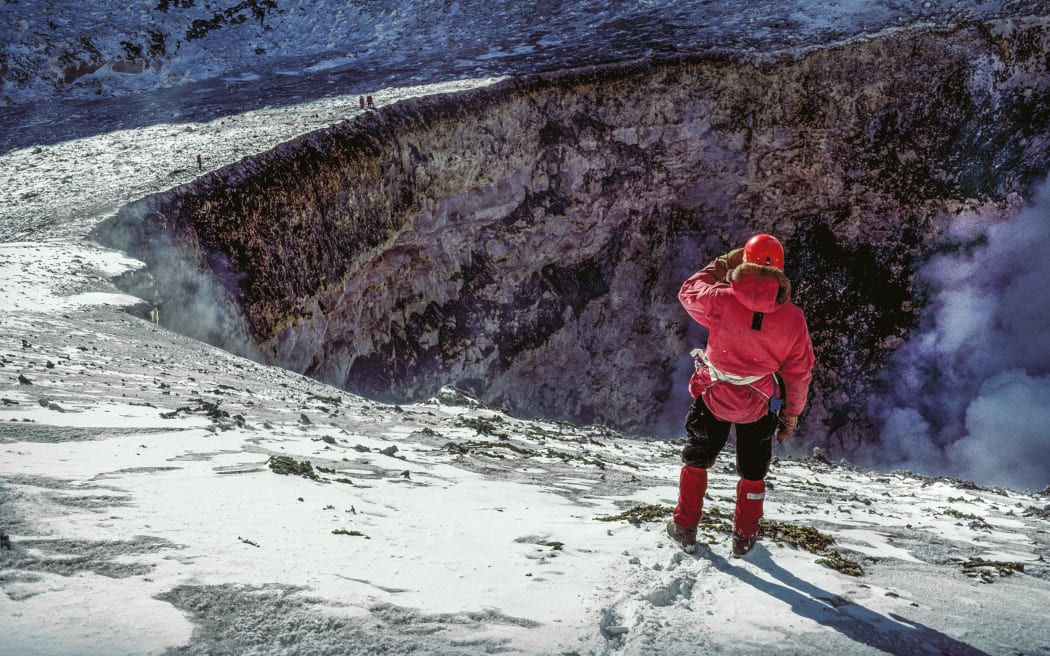
Harry Keys watches as team members on the lip of the Inner Crater throw ropes down the wall towards the lava lake. With swirling steam and gas filling the Inner Crater, it's difficult to see if the ropes are long enough to reach the fumarole from which Werner Giggenbach can take his samples. Photo: Colin Monteath
See: A gallery of photos from Colin Monteath's book:
